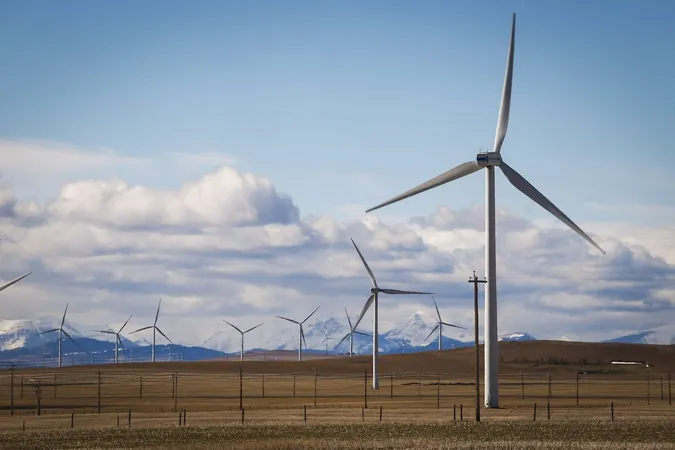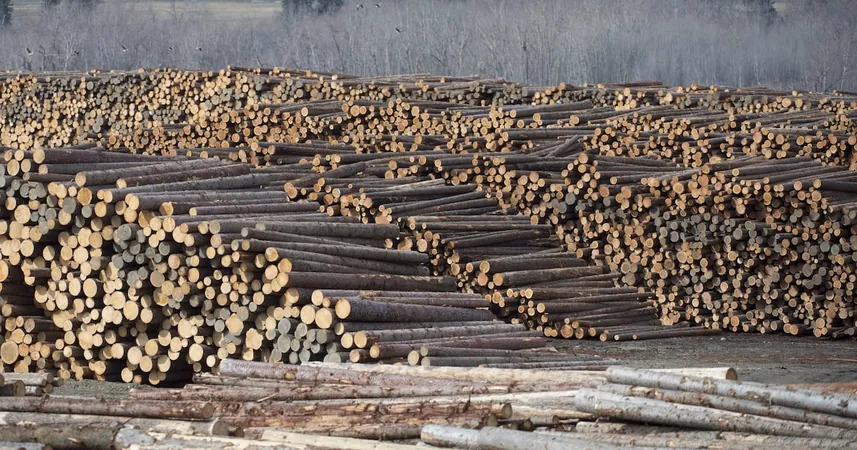
Alberta’s New Regulations Threaten Renewable Energy Growth: What You Need to Know
2025-01-01
Author: Noah
Overview of Upcoming Changes
The Alberta government’s impending overhauls to its electricity market are sending shockwaves through the renewable energy sector, significantly disadvantaging wind and solar projects, according to industry experts. This shake-up comes as Premier Danielle Smith’s administration aims to stabilize the electricity market, which has faced instability, fluctuating prices, and recent shortages that even led to widespread power outages.
Key Changes to the Electricity Market
One of the primary changes involves requiring energy producers to commit to supplying electricity a full day in advance rather than just a few hours. This shift is proposed as a strategy to combat price volatility. Another critical component is enhancing connections to neighboring grids in British Columbia and Saskatchewan to bolster system reliability.
Challenges for Renewable Energy
However, the adjustment fails to tackle the underlying issues of capacity shortages on various segments of the Alberta grid, which have impeded renewable energy facilities from delivering their full output. The Canadian Renewable Energy Association (CanREA) reported that in the third quarter, generators encountered congestion preventing them from delivering power 45% of the time.
Impact on Revenue and Future Projects
Vittoria Bellissimo, CEO of CanREA, emphasized the need for compensation for these operational constraints. Without it, renewable generators face decreased revenues, making it harder for them to manage debt and potentially leading to credit downgrades. This situation could stifle prospective projects, exacerbating the challenges associated with energy development in Alberta as the demand grows alongside an expanding population, data centers, and industrial projects.
Concerns Over Investor Relations
"The government should not be imposing additional costs and barriers on investors who have committed here in good faith, as this could stifle future energy generation in the province," Bellissimo warned.
Investment Trends and Infrastructure Needs
Previously, Alberta adopted a free-market strategy fostering long-term renewable power deals, resulting in a surge of investments in wind and solar. However, much of this investment is concentrated in the province's southern regions, which are far from urban hubs and lack the necessary transmission infrastructure, contrasting sharply with Alberta's traditional reliance on large, centralized fossil fuel power plants.
Moratorium on Renewable Projects
In a controversial move, the United Conservative Party government enacted a seven-month moratorium on new renewable projects earlier this year, grounding the decision in concerns over arable land and electricity reliability. Following this moratorium, the government has since enacted a slew of restrictions targeting renewable developments, especially in areas deemed to contain "pristine viewscapes" or invaluable farmland. As a consequence, investments in new renewable projects have notably declined.
Economic Viability Concerns
The new market structure, currently being developed, is under scrutiny as experts argue that recent analyses conducted suggest diminished economic viability for renewables. Predictions indicate that by 2027, solar projects may fail to meet the required capital return rates, followed by wind projects declining below these thresholds by 2037.
Criticism of Economic Forecasts
Critics like Bellissimo dismiss these forecasts, arguing that they are based on flawed assumptions and lack vital information regarding future grid connection costs and ancillary service expenses.
Response from the Alberta Government
While Alberta's Utilities Minister Nathan Neudorf was unavailable for comment, his press secretary stated that these drastic measures resulted from extensive industry engagement. However, critics note that the proposed changes lack responses to the renewable sector's pressing concerns.
Concerns from Industry Leaders
Dan Balaban, CEO of Greengate Power Corp., reflected on the current climate, expressing his disappointment at the decline in renewables investment. His company’s significant project, the $700-million Travers Solar farm — the largest of its kind in Canada — was developed during a more favorable investment climate. He fears that the future of Alberta's energy mix may skew heavily towards fossil fuels rather than the cleaner, renewable alternatives that many hoped to see expanding in the province.
Future Outlook
"This trajectory indicates that Alberta might be steering towards a more fossil fuel-dominant energy landscape, counter to what we envisioned under the previous market structure," Balaban stated.
Conclusion
As Alberta navigates this complex energy transition, industry stakeholders are left grappling with uncertainty over future investments in renewables. Will these new regulations truly find a balance between reliability and sustainability, or will they choke off the very innovations that can lead Alberta into a cleaner energy future? Time will tell.









 Brasil (PT)
Brasil (PT)
 Canada (EN)
Canada (EN)
 Chile (ES)
Chile (ES)
 Česko (CS)
Česko (CS)
 대한민국 (KO)
대한민국 (KO)
 España (ES)
España (ES)
 France (FR)
France (FR)
 Hong Kong (EN)
Hong Kong (EN)
 Italia (IT)
Italia (IT)
 日本 (JA)
日本 (JA)
 Magyarország (HU)
Magyarország (HU)
 Norge (NO)
Norge (NO)
 Polska (PL)
Polska (PL)
 Schweiz (DE)
Schweiz (DE)
 Singapore (EN)
Singapore (EN)
 Sverige (SV)
Sverige (SV)
 Suomi (FI)
Suomi (FI)
 Türkiye (TR)
Türkiye (TR)
 الإمارات العربية المتحدة (AR)
الإمارات العربية المتحدة (AR)